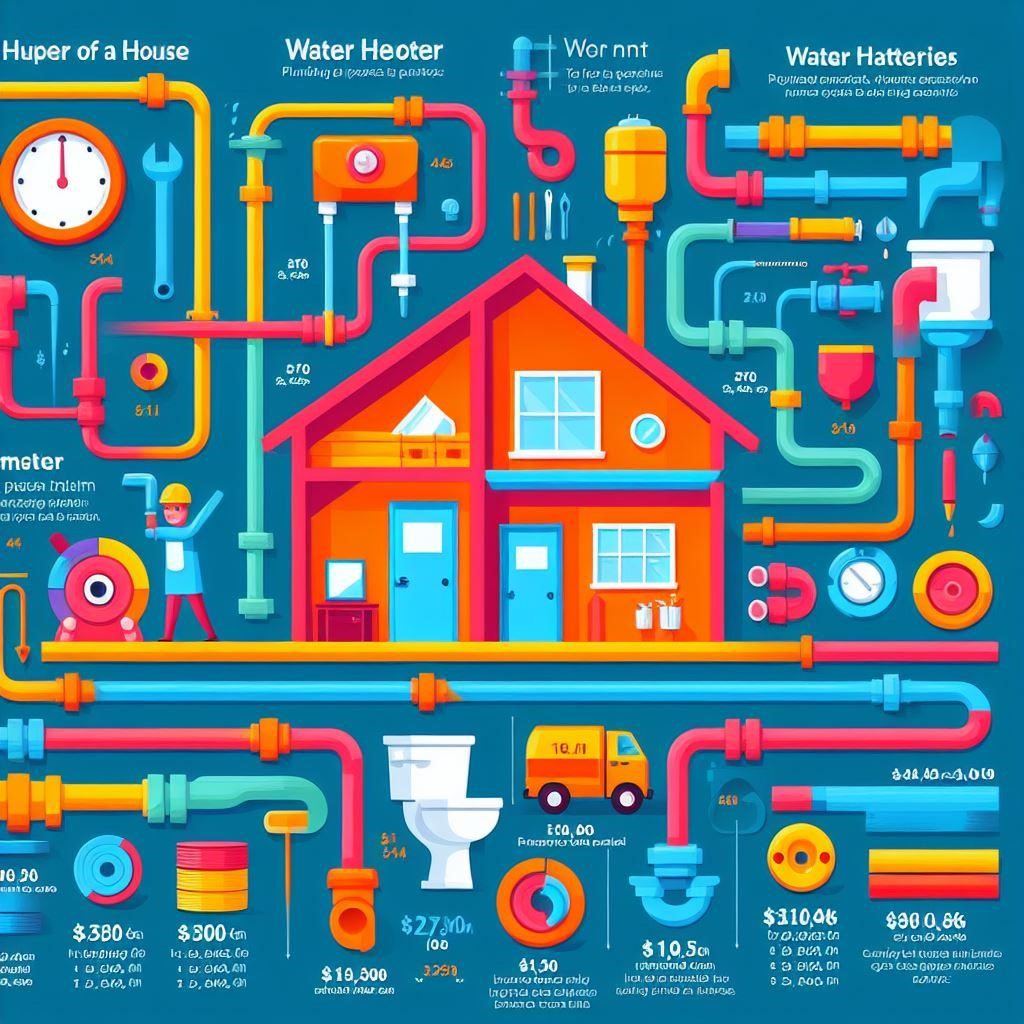Plumbing is an essential and often overlooked aspect of home construction and renovation. The cost to plumb a house can vary significantly depending on a range of factors, from the size and age of the home to the materials and labor required. Understanding these variables is crucial for homeowners planning a new build or repiping project.
Table of Contents
ToggleNew Home Plumbing Costs
For a new construction home, the average cost to rough in the plumbing system typically ranges from $8,000 to $12,000 for a 2,000-square-foot house with 2-3 bathrooms. This process involves installing the main water supply lines, drainage pipes, and vents throughout the home’s framework before the walls are closed up.
The type of piping material used is a major cost factor. Copper piping, known for its durability and resistance to corrosion, tends to be the most expensive option at $3-$7 per linear foot installed. PEX, a flexible plastic tubing, is a more budget-friendly alternative at $0.40-$2 per linear foot. PVC plastic pipes fall in the middle at $1-$3 per linear foot.
In addition to the piping, the number and type of plumbing fixtures specified for the home will impact the overall cost. Sinks, toilets, showers, and tubs can range from $450 to $1,800 per fixture installed. High-end, luxury fixtures are at the upper end of that range, while standard builder-grade options fall on the lower end.
The complexity of the plumbing system layout is another key variable. Homes with more bathrooms, a finished basement, or unique architectural features will require more extensive and intricate piping runs, driving up labor costs. Plumbers typically charge $45-$200 per hour, with the total labor cost depending on the project duration.
Repiping Existing Homes
For homeowners with an older property, repiping the entire plumbing system is often necessary to address leaks, low water pressure, or outdated materials like galvanized steel or polybutylene pipes. The average cost to repipe a 2,000 square foot home with 2-3 bathrooms ranges from $3,100 to $5,500.
Repiping involves completely removing the old plumbing and replacing it with new piping, which is a more labor-intensive and disruptive process compared to new construction. Plumbers must access the walls, floors, and ceilings to access and reroute the pipes, adding to the time and complexity of the job.
The material costs for repiping are generally lower than new construction, as the home’s footprint and fixtures are already established. Homeowners can expect to pay $0.40-$2 per linear foot for PEX or PVC piping. Copper remains the most expensive option at $3-$5 per linear foot installed.
In addition to the pipe material, the accessibility of the existing plumbing system is a major cost driver. Homes with crawl spaces, unfinished basements, or easily accessible wall cavities will be less expensive to repipe than properties with finished interiors, limited access, or complex layouts.
Other Cost Considerations
Beyond the material and labor costs, several other factors can influence the total price tag for a plumbing project:
- Permits: Local municipalities typically require permits for any plumbing work, with fees ranging from $50 to $500 depending on the jurisdiction and scope of the project.
- Regional Costs: Labor and material prices can vary significantly by geographic location, with costs generally higher in urban areas and coastal regions.
- Fixtures and Upgrades: Homeowners may choose to upgrade or add new plumbing fixtures like high-efficiency toilets, smart faucets, or whole-home water filtration systems, which can increase the budget.
- Unforeseen Issues: When repiping an existing home, plumbers may uncover hidden problems like water damage, mold, or asbestos that require additional work and expenses.
To get an accurate estimate for a plumbing project, homeowners need to consult with multiple licensed and insured plumbers in their local area. These professionals can assess the specific needs of the home, provide detailed cost breakdowns, and identify any potential challenges or upgrade opportunities. With careful planning and the right contractor, homeowners can ensure their plumbing system is installed or updated efficiently and cost-effectively.

